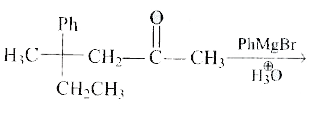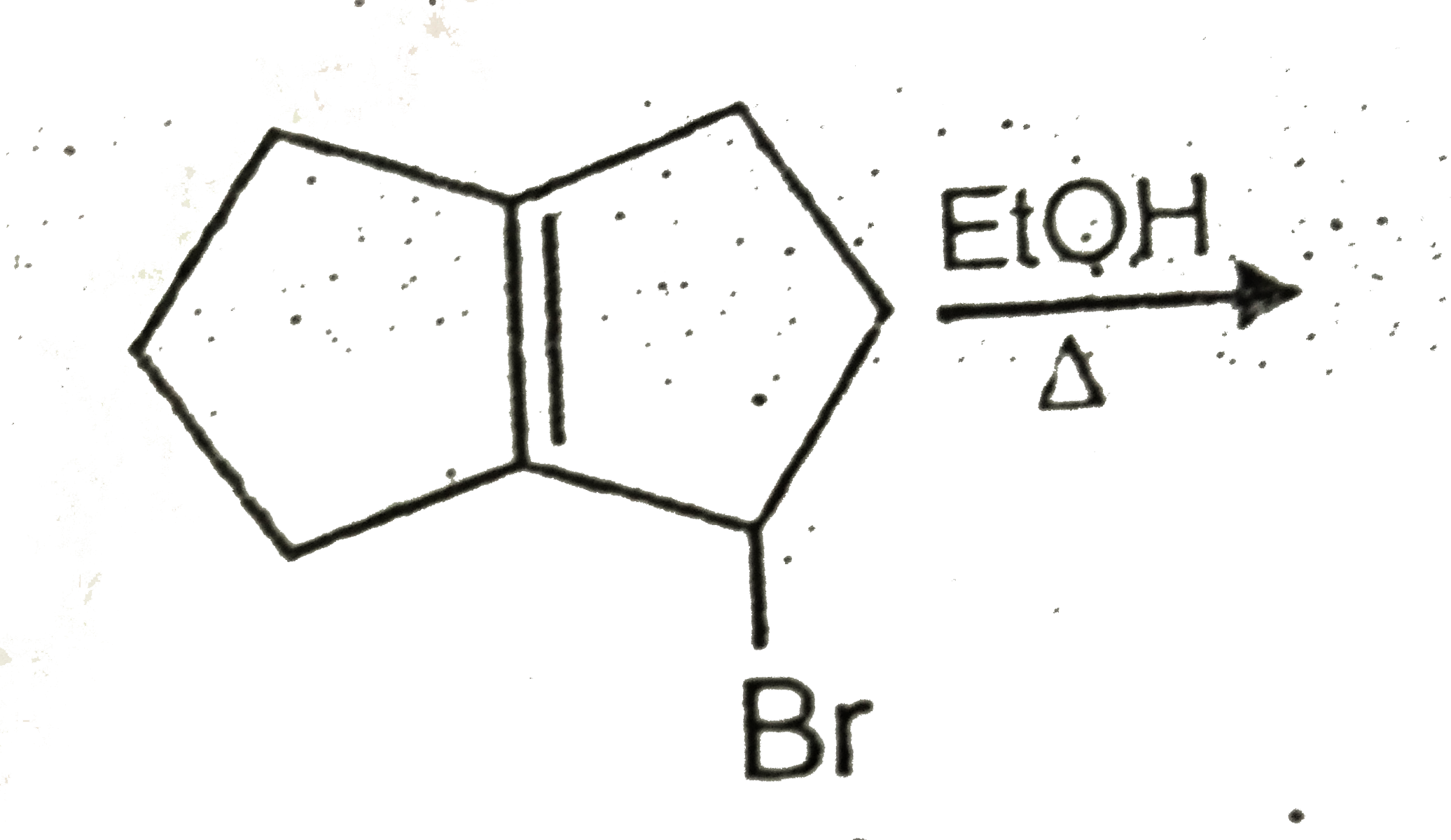How many aldol product will be obtained in the following reaction
CH3CHO+PhCHONaOH−−−→
2
3
4
1
The correct Answer is:A
To determine how many aldol products will be obtained from the reaction of acetaldehyde (CH₃CHO) and benzaldehyde (PhCHO) in the presence of NaOH, we can follow these steps:
Step 1: Identify the Reactants
The reactants are:
- Acetaldehyde (CH₃CHO)
- Benzaldehyde (PhCHO)
Step 2: Check for Alpha Hydrogens
- Acetaldehyde (CH₃CHO):
- The structure is CH₃-CH=O.
- The carbon adjacent to the carbonyl (C=O) has three hydrogen atoms (CH₃), which means it has alpha hydrogens available for the aldol reaction.
- Benzaldehyde (PhCHO):
- The structure is C₆H₅-CHO.
- The carbon adjacent to the carbonyl (C=O) does not have any hydrogen atoms because it is bonded to a phenyl group (C₆H₅). Therefore, benzaldehyde has no alpha hydrogens.
Step 3: Determine the Aldol Reaction
In an aldol condensation reaction, at least one of the reactants must have alpha hydrogens to undergo the reaction. Since:
- Acetaldehyde has alpha hydrogens and can undergo aldol condensation.
- Benzaldehyde does not have alpha hydrogens and cannot undergo aldol condensation.
Step 4: Identify the Possible Products
When acetaldehyde reacts with itself (since it is the only reactant with alpha hydrogens), it can form an aldol product. The aldol product formed from the self-condensation of acetaldehyde is:
- 3-Hydroxybutanal (an aldol product).
Step 5: Conclusion
Since benzaldehyde cannot participate in the aldol reaction due to the absence of alpha hydrogens, the only aldol product formed will be from the self-condensation of acetaldehyde. Therefore, only one aldol product will be obtained from the reaction.
Final Answer
The number of aldol products obtained from the reaction of acetaldehyde and benzaldehyde is 1.
The reactants are:
- Acetaldehyde (CH₃CHO)
- Benzaldehyde (PhCHO)
- Acetaldehyde (CH₃CHO):
- The structure is CH₃-CH=O.
- The carbon adjacent to the carbonyl (C=O) has three hydrogen atoms (CH₃), which means it has alpha hydrogens available for the aldol reaction.
- Benzaldehyde (PhCHO):
- The structure is C₆H₅-CHO.
- The carbon adjacent to the carbonyl (C=O) does not have any hydrogen atoms because it is bonded to a phenyl group (C₆H₅). Therefore, benzaldehyde has no alpha hydrogens.
In an aldol condensation reaction, at least one of the reactants must have alpha hydrogens to undergo the reaction. Since:
- Acetaldehyde has alpha hydrogens and can undergo aldol condensation.
- Benzaldehyde does not have alpha hydrogens and cannot undergo aldol condensation.
When acetaldehyde reacts with itself (since it is the only reactant with alpha hydrogens), it can form an aldol product. The aldol product formed from the self-condensation of acetaldehyde is:
- 3-Hydroxybutanal (an aldol product).
Since benzaldehyde cannot participate in the aldol reaction due to the absence of alpha hydrogens, the only aldol product formed will be from the self-condensation of acetaldehyde. Therefore, only one aldol product will be obtained from the reaction.
The number of aldol products obtained from the reaction of acetaldehyde and benzaldehyde is 1.
Topper's Solved these Questions
Similar Questions
Knowledge Check
How many products will obtain in the following reaction?
Ph−CHO++O∣∣C−HNaOH−−−→A2B3C4D1
How many monobrominated products will be obtained by above reaction?A6B4C5D3
How many products will be obtained and what is the relationship between then?A2 and enantiomersB3 and all are diastereomersC2 and diastereomersD3 and all are homomers
How many predominant products are obtained in the reaction ?

View SolutionHow many total possible products are formed in following reaction:
CH3−CH2−CH3∣CH−CH2−CH3(Cl2)/hv−−−−−−−−−→monochlorination?
View SolutionWhat will be product in the following reaction
CH3−CH2−CH2−CH3KMnO4−−−−→?
View SolutionIdentify the product of following reaction : CH3CHO+NH3→
View SolutionProduct in following reaction is :
CH3MgI+HCHO→ Product
View Solution
